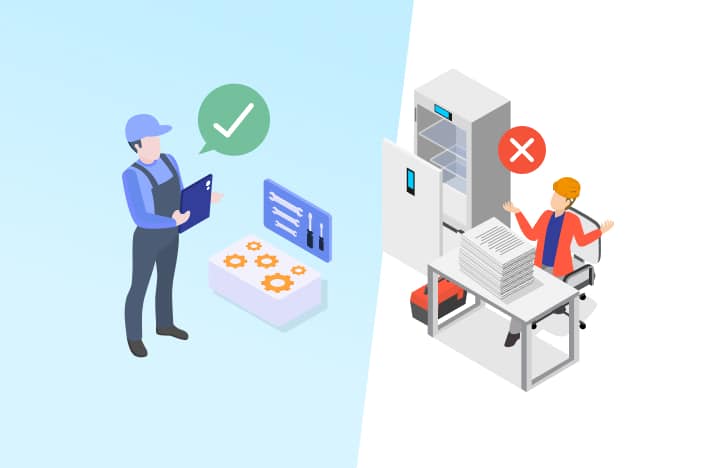If your business relies on mission-critical assets, you’ll understand how important it is to manage those assets effectively. Whether it’s commercial kitchen equipment or specialised medical machinery, proper asset management will mean the difference between long periods of costly downtime and seamless operations. The problem we see all too often is that many businesses operate from a reactive approach, rather than proactive – leaving themselves open to compliance risks, unexpected equipment failures, and huge profit losses. From our experience in this space and in working with our clients, we’ve compiled a list of do’s and don’ts when it comes to managing your mission-critical assets.
Do implement a proactive maintenance strategy
Think you don’t need preventative maintenance? Waiting to service equipment until it fails is an expensive and unnecessary mistake. Implementing a proactive maintenance strategy keeps your equipment running smoothly – ensuring small issues don’t snowball into catastrophic ones. With regular inspections from technicians, scheduled maintenance, and predictive monitoring of performance, you can minimise downtime, extend the life of your assets, and save your bottom line in the long run.
Don’t rely on manual tracking or outdated systems
While manual systems like spreadsheets, paper logs, or outdated systems have worked in the past, they haven’t evolved with the demands of modern operations. Modern tracking lacks real-time visibility and is prone to human error – both of which can cause your business big, costly issues. Upgrading your operations to incorporate an effective asset management system allows you to effortlessly track asset usage, centralise information, and schedule proactive maintenance at the click of a button.
Do train your team and enforce accountability
Even the best equipment won’t deliver the results you want if your people don’t understand how to use it. By taking the time to train your team properly, you set them – and you – up for success. Ensure they know how to follow compliance protocols, spot issues, and how to log them and request servicing when necessary. It’s equally important to establish accountability here by making a certain person or team responsible for certain assets or processes. This accountability creates a sense of ownership, and ultimately prevents crucial details from being missed.
Don’t postpone repairs or servicing
It can be tempting to delay a machine service in the interest of saving money at the moment. But more often than not, this approach has the opposite effect. Overlooking minor faults that aren’t caught by regular servicing can lead to disastrous failures, which will cost much more to fix. On top of this, it also creates a safety risk for your employees or customers – leaving you open to potential lawsuits. Promptly addressing repairs and sticking to a regular maintenance schedule is a simple way to ensure you’re protecting your people, your equipment, your customers, and your bottom line.
Do maintain accurate documentation
Maintaining accurate records isn’t just an administrative task – it creates a foundation for more informed decision-making. Keeping detailed records of everything from machine usage history to servicing and repairs will help you pick up on patterns, better demonstrate compliance in the event of an audit, and give you data to more effectively forecast future needs.
Don’t overlook compliance and safety standards
Mission-critical assets will often come with very strict safety requirements and regulations. If you take the risk and overlook or ignore these, you open your business up to fines, reputational damage, or even serious accidents and lawsuits. Embedding compliance checks into the foundation of your asset management strategy will ensure you’re consistently meeting regulatory requirements, protecting your teams, and building trust with all stakeholders.
To wrap up
Effective management of mission-critical assets is about a lot more than simply fixing problems when they inevitably pop up. It’s about building a proactive, accountable system that prioritises compliance, safety, efficiency, and uptime. By keeping these do’s and don’ts in mind, you’re protecting all stakeholders, cutting your long-term costs, and giving your business its best chance at operating at its full potential.
